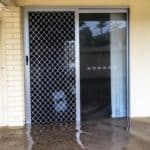One of the most important considerations when installing a wooden gate is selecting the correct number and type of hinges. Hinges are crucial in ensuring your gate functions properly, withstands the elements, and provides years of security. But how do you determine the ideal number, given the many hinge types and factors to consider?
This comprehensive guide examines everything you need to know about choosing strong, durable, flawless gate hinges. We’ll provide key considerations for selecting the perfect hinge quantity and pro tips for specialized applications. Read on to learn the gate hinge basics that will keep your entryway, garden, or driveway securely closed.
Generally, a gate should have at least one hinge for every 30 inches in height or portion thereof, which is the usual guideline. This means that two hinges would be sufficient for a 60-inch tall gate, while a gate taller than 60 inches would typically need three hinges.
Why Hinge Numbers Matter for Wooden Gates

Hinges serve the vital purpose of connecting the wooden gate to the fence or post, allowing smooth, reliable opening and closing. Selecting the appropriate amount helps:
- Prevent sagging or twisting over time
- Distribute the gate’s weight evenly to reduce strain
- Allow easy operation and protect the gate’s structure
- Deter forced entry and enhance security
In short, a well-hinged gate functions better and maintains structural integrity despite weathering, use, and time.
Critical Factors in Determining Wooden Gate Hinge Quantity
Several vital considerations influence the ideal hinge numbers for your specific wooden gate:
Wooden Gate Size
- Small gates under 3 feet wide and 50 pounds typically only require two hinges spaced along the gate edge or frame.
- Larger gates benefit from three or more hinges to disperse weight and withstand frequent opening/closing.
Gate Material and Design
- Heavier wooden gates from dense hardwoods require additional hinges to share the load.
- Ornate or framed wooden gates also need more hinges to stabilize their connections.
Gate Location and Traffic
- High-traffic gates, like driveway gates, require extra hinges for repeated operation.
- Similarly, exterior gates exposed to wind, rain, and sun benefit from heightened support.
Special Considerations
Gates intended for automation or electrification may need hinges explicitly designed to integrate gate hardware and withstand vibration from gate operators.
Pro Tip: When in doubt, add an extra hinge! The small additional cost vastly improves gate stability.
Now that we’ve covered the basics, let’s examine some general wooden gate hinge number guidelines.
Hinge Quantity Guidelines Based on Gate Width
As a rule of thumb, the required number of hinges depends on the gate’s width and selected hinge type:
Tee Hinges
Tee hinges, called cross garnet hinges, utilize a classic crossed design for simple wooden gates. The general formula is:
- Hinge Length = At least 1/2 the Gate Width
Your wooden gate width measures 48 inches, so you’ll need tee hinges that are at least 24 inches long. This allows the bases to mount solidly to the gate frame and post.
Strap Hinges

Strap hinges employ rectangular lengths of material instead of a crossing pattern. For these:
- 2 hinges for gates less than 42 inches wide
- 3 hinges for gates 43 to 84 inches wide
- 4 hinges for gates over 84 inches
They allow stable, straight connections for lightweight wooden gates and doors.
Hook and Band Hinges
These specialty gate hinges utilize a loose pin and socket design for self-closing. The formula is:
- Hinge Length = 1/3 the Gate Width
So, for a 48-inch-wide wooden gate, look for hook-and-band hinges at least 16 inches long. This will appropriately balance the weight while enabling the self-closing action.
Case Study: Hinge Numbers for a 96-Inch Gate
These guidelines apply to an 8-foot (96-inch) wide double wooden gate.
Since it exceeds 84 inches, strap hinges would require 4 units. Tee hinges must be half the width, so 48-inch versions are needed. The hook and band hinges should measure 1/3 the width—32 inches.
This covers the basics, but for maximum stability, we recommend 5 hinges for such a wide gate. A third middle hinge prevents sagging, while the outer two reinforce mounting points.
Special Considerations for Large, Heavy-Duty Wooden Gates
Gates over 7 feet tall or intended for heavy use often benefit from specific design modifications and hardware selection for optimal performance.
Reinforced Framing
Taller wooden gates can rack and deform under their weight without reinforced framing. Consider thicker horizontal cross-supports and galvanized steel diagonal gate bracing to prevent twisting, warping, or sagging.
Additional Middle Hinge
For wooden gates over 84 inches wide or 7 feet tall, adding a third middle hinge provides vital support against gravity and leverage forces—position this midpoint hinge near the top for maximum strength.
Heavyweight Hinge Selection
Select hinges rated for gate weight and frequency of use. For example, look for terms like “heavy duty” “industrial,” or specific weight capacities. Common options include:
- Stainless steel hinges: Corrosion and rust resistant
- Ball bearing hinges: Reduce friction and wear
- Self-closing hinges: Latch securely without manual effort
Reinforced Hinge Mounting
Use sufficiently long screws or bolts to anchor hinges into solid framing, not just the gate facing. For post-mounting, utilize threaded hinge plates or carriage bolts for strength.
Hinged Gate Posts
Rather than securing gate posts in concrete, allow them to pivot slightly to align with gate movement. This reduces strain on the wooden gate itself.
By adequately installing heavy-duty gate hardware designed for the application, you can feel assured even the most significant wooden gates will function smoothly for decades.
DIY Wooden Gate Hinge Installation Guide
Installing gate hinges yourself isn’t difficult, but doing it properly ensures they support the gate across its lifetime. Follow this process for foolproof function:
Step 1: Attach Hinges to Gate
Before mounting the gate, connect the hinges to its edge or frame. This allows you to pre-align them accurately.
Step 2: Hang Gate on Posts
Prop the gate and posts temporarily, then lift the gate into position. Adjust the posts so that the gate faces are flush.
Step 3: Mark Post Locations
With the gate held in the open position, mark outlines of the hinge plates on the post through their mounting holes.
Step 4: Install Hinge Plates on Posts
Predrill holes for fasteners in the centre of each hinge outline. Then install hinge anchor plates using adequately sized screws or bolts.
Step 5: Confirm Smooth Operation
Test opening and closing the wooden gate to ensure ideal clearance and easy operation. The hinged joint should not bind or stick.
Following these simple steps as you install new wooden gates ensures they hang true for smooth function and reliable security.
Troubleshooting Common Wooden Gate Hinge Issues

Even adequately installed wooden gates can develop hinge problems over the years, causing operation or security issues. However, understanding the common failure points makes troubleshooting easier.
Sagging Gates
Gates sag when hinges fail to support their weight distribution adequately. Causes include:
- Insufficient hinge quantity
- Hinge fasteners loosen over time
- Extreme weathering degrading the wood frame
Solutions:
- Add supplemental hinges for better weight distribution
- Tighten/reinforce loose hinge hardware
- Replace severely weathered wood
Sticking Gates
Sticky or stubborn gates that resist opening can result from:
- Hinge friction and lack of lubrication
- Gate post misalignment after settling
- Warped, deformed gate frames
Fixes:
- Oil hinge pins annually
- Re-hang gate to realign with posts
- Trim or resecure warped wooden gate frames
Catching these issues early vastly simplifies the repair process compared to replacing entire gates.
Keeping Wooden Gate Hinges in Top Shape
With wooden gates subject to almost constant assault from weather and use, maintaining hinges ensures smooth function. Follow these gate hinge care tips:
- Annually clean hinges with a wire brush to remove grit and corrosion
- Apply penetrating oil or lubricant to hinge pins and joints
- Check and tighten any loose hinge fasteners
- Assess hinge condition and replace severely worn or damaged units
- Touch-up paint or protective coatings on hinge hardware
Properly lubricating and securing wooden gate hinges significantly extends their working life. However, they should be periodically inspected for excessive slop, wear, or deterioration that necessitates replacement.
Adjusting Gate Hinges for the Perfect Fit
Even if wooden gates hang perfectly when installed, natural wood movement and settling can throw off alignment over time. Rather than dismantling the entire gate, tweak the adjustable hinges:
Vertical Adjustment
If a gate edge doesn’t align cleanly with the post, loosen the hinge screws and reposition the gate itself up or down as needed.
Depth Adjustment
If the gate faces no longer sit flush, rotate the adjustable hinge leaf inward or outward to compensate.
3-Way Adjustment
For more flexibility, upgrade to specialty hinges with independent adjustment of height, depth, and lateral swing all in one unit.
This way, you can fine-tune wooden gates season after season for a precision fit and flawless operation.
Frequently Asked Questions
These common wooden gate hinge questions provide additional insight into optimal selection and maintenance:
How many hinges should a 5-foot wide wooden gate have?
For a 60-inch (5-foot) gate, use 3 hinges for adequate support. Position one high, one low, and one in the centre.
Can I use door hinges on garden gates?
Standard door hinges lack durability for outdoor use. Opt for heavy-duty, corrosion-resistant gate hinges instead for reliability.
Should driveway gates have more hinges?
Yes, size driveway gates for at least 3 robust hinges since their frequent use and leverage forces demand extra stability.
How do I stop my gate hinges from squeaking?
Squeaky hinges need lubrication. Clean the joints of grit, then apply silicone spray or penetrating oil to all contact points.
Why is my wooden gate warping and hard to open?
Moisture warping indicates it lacks adequate support. Add supplemental hinges to share the load across the gate width.
Knowing when and how to address hinge issues protects your investment and security.
A gate’s hinges are among its most essential components
Selecting the proper number and installing durable hinge hardware suited for the gate’s dimensions and purpose significantly extends its usable life.
Remember these wooden gate hinge guidelines whether you’re building gates from scratch or troubleshooting a sagging entryway. An adequately hung gate operates smoothly for years and withstands attempted intrusions. You can customise the ideal hinged solution by understanding critical factors like gate size, weight ratings, weather resistance, and adjustable flexibility.
And if your needs exceed the capacity of standard gate hinges, don’t hesitate to enlist a professional. They can ensure large or automated wooden gates integrate specialized brackets, reinforced framing, and gate hardware for flawless function.
With the proper hinge selection and care, your wooden gates can provide security, privacy, and curb appeal while avoiding repairs. Use this comprehensive hinge guide to enhance performance on your next installation or upgrade project.

I’m James Davis, a carpenter with eight years of experience in carpentry services, repairs, installations, renovations, and maintenance of interior doors. I have a diploma in carpentry and joiner trade from the Education Skills Australia Institute and take pride in delivering high-quality results to ensure customer satisfaction. I’m a blog writer for Octopus Doors Company and enjoy sharing my knowledge and tips on maintaining security measures and choosing the right door materials, paints, or handle styles. I specialize in custom-made interior doors and strive to make every home look fabulous. Contact me anytime for help with door-related issues.










